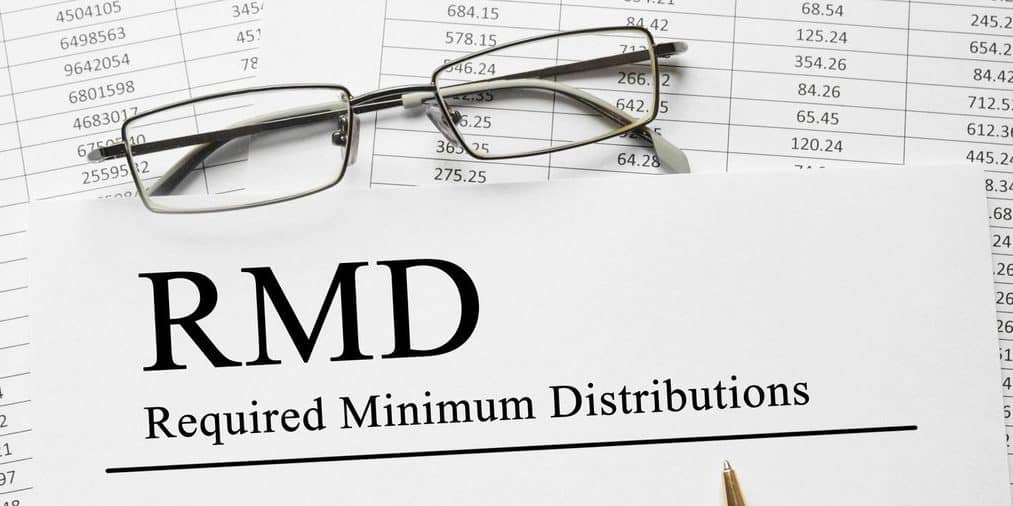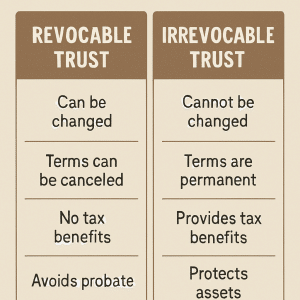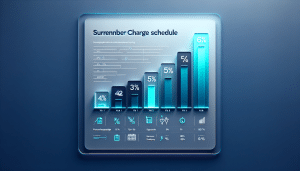What is the 59 1/2 Rule?
The 59 1/2 rule applies a 10% tax penalty to IRA withdrawals before age 59 ½. This IRA early withdrawal penalty is an attempt to discourage you from “dipping” into your retirement savings accounts early.
Withdrawals taken from a traditional IRA before you are age 59½ are called early distributions. Generally, if you are under age 59½, you must pay a 10% penalty tax on the distribution of any assets (money or other property).
The 59 1/2 Rule early withdrawal penalty tax is in addition to any regular income tax you will pay on the early distribution.
59 1/2 rule exceptions
You may be able to avoid a 10% penalty tax if your withdrawal falls under any of the exceptions to the 59 1/2 rule. The 7 most commonly used exceptions to the 59 1/2 rule are:
- – Certain medical expenses
- – Disability
- – Qualified higher education expenses
- – A first-time home purchase
- – A qualified reservist distribution
- – Qualified disaster-related distributions
- – Qualified military-related distributions
| Exception | 59 1/2 10% Penalty Does Not Apply for: | Qualified Plans | IRA, SEP, SIMPLE IRA* and SARSEP Plans | Internal Revenue Code Section(s) |
|---|---|---|---|---|
| Age | after participant/IRA owner reaches age 59½ | yes | yes | 72(t)(2)(A)(i) |
| Automatic Enrollment | permissive withdrawals from a plan with auto enrollment features | yes | yes for SIMPLE IRAs and SARSEPs | 414(w)(1)(B) |
| Corrective Distributions | corrective distributions of excess contributions, excess aggregate contributions and excess deferrals | yes | n/a | 401(k)(8)(D), 401(m)(7)(A), 402(g)(2)(C) |
| Death | after death of the participant/IRA owner | yes | yes | 72(t)(2)(A)(ii) |
| Disability | total and permanent disability of the participant/IRA owner | yes | yes | 72(t)(2)(A)(iii) |
| Domestic Relations | to an alternate payee under a Qualified Domestic Relations Order | yes | n/a | 72(t)(2)(C) |
| Education | qualified higher education expenses | no | yes | 72(t)(2)(E) |
| Equal Payments | series of substantially equal payments | yes | yes | 72(t)(2)(A)(iv) |
| ESOP | dividend pass through from an ESOP | yes | n/a | 72(t)(2)(A)(vi) |
| Homebuyers | qualified first-time homebuyers, up to $10,000 | no | yes | 72(t)(2)(F) |
| Levy | because of an IRS levy of the plan | yes | yes | 72(t)(2)(A)(vii) |
| Medical | amount of unreimbursed medical expenses (>10% AGI for 2021, >7.5% AGI; for 2017 - 2020) | yes | yes | 72(t)(2)(B) |
| Medical | health insurance premiums paid while unemployed | no | yes | 72(t)(2)(D) |
| Military | certain distributions to qualified military reservists called to active duty | yes | yes | 72(t)(2)(G) |
| Returned IRA Contributions | if withdrawn by extended due date of return | n/a | yes | 408(d)(4) |
| Returned IRA Contributions | earnings on these returned contributions | n/a | no | 408(d)(4) |
| Rollovers | in-plan Roth rollovers or eligible distributions contributed to another retirement plan or IRA within 60 days | yes | yes | 402(c), 402A(d)(3), 403(a)(4), 403(b)(8), 408(d)(3), 408A(d)(3) |
| Separation from Service | the employee separates from service during or after the year the employee reaches age 55** | yes | no | 72(t)(2)(A)(v), |
**Qualified public safety employees: Qualified law enforcement or firefighter distributions. In addition, all withdrawals are subject to federal income tax, and depending on the state in which you live, you may be subject to state taxes as well. It is important to check with your tax advisor to determine what tax implications you may incur when taking distributions from your Traditional IRA.
how much can i withdraw at 59 1/2?
The 59 1/2 rule does not apply to IRA withdrawals after age 59 1/2; after you turn 59 1/2 you can withdraw as much as you want from your Traditional IRA without restrictions or penalties.
You can make a penalty-free withdrawal at any time during this period, but if you had contributed pre-tax dollars to your Traditional IRA, your distributions will be taxed as ordinary income.
Does the 59 1/2 Rule Apply to Annuity Withdrawals?
Annuity withdrawals made before you reach age 59½ are typically subject to a 59½ Rule 10% early withdrawal penalty tax. For early withdrawals from a pre-tax qualified annuity, the entire distribution amount may be subject to the penalty. If you withdraw money early from a non-qualified annuity, typically only earnings and interest will be subject to the penalty.
Taxes will ultimately be determined by the specific type of annuity you purchase — either qualified or non-qualified. If you are considering withdrawing from your annuity early, it’s a good idea to speak with a tax professional.
Roth IRA Early Distribution Rules
One of the best ways to avoid paying 59 1/2 rule penalty tax on your IRA distributions is to convert your traditional IRA into a Roth IRA. Qualified distributions from a Roth IRA are not taxed; however, Roth IRAs can not be accessed right away without penalty.
Roth IRA Distributions
A qualified distribution is any withdrawal or distribution that meets the following requirements.
- It is made after the 5-year period beginning with the first tax year for which a contribution was made to a Roth IRA set up for your benefit.
- The payment or distribution is:
- Made on or after the date you reach age 59½
- Made because you are disabled (defined earlier)
- Made to a beneficiary or to your estate after your death, or
- Meets the requirements listed under First Home ($ 10,000-lifetime limit).

What Is a Required Minimum Distribution (RMD)?
Required minimum distributions (RMDs) is the minimum withdrawal amount you must make from most qualified retirement plans each year; (excluding Roth IRAs).
You cannot keep retirement funds in your account indefinitely. You generally have to start taking withdrawals from your IRA, SIMPLE IRA, SEP IRA, or retirement plan account when you reach age 72 (73 if you reach age 72 after Dec. 31, 2022).
Once you turn 73, you must start taking annual required minimum distributions (RMDs) from your Traditional IRA. Your first RMD must be taken by April 1 of the year following the year you reach age 73. Every year thereafter you must take an RMD by December 31.
Calculating Required Minimum Distributions RMDs
To calculate your required minimum distribution (RMD) you will need to:
- Calculate your IRAs ending account balance on the last day of the previous calendar year
- Get your distribution period from the IRS’s “Uniform Lifetime Table.”
- Divide your IRA’s account balance from step #1 by your distribution period.
What if you don't take your full RMD amount?
There is a hefty IRS RMD penalty tax if you do not take the required minimum distribution from your IRA accounts. Previously you had to pay a 50% tax rate on required money that was not withdrawn.
The new SECURE 2.0 reduces the 50% penalty for missing an RMD to a 25% excise tax on insufficient or late RMD withdrawals, effective 2023. This new RMD law does not impact missed RMDs in 2022.
If the RMD is corrected timely, the penalty can be reduced to 10%. Follow the IRS guidelines and consult your tax advisor. Learn how to calculate your RMD using Smart Assets RMD Calculation and Tables.
RMD Tables
| Age | Distribution Period | Age | Distribution Period |
|---|---|---|---|
| 72 | 27.4 | 97 | 7.8 |
| 73 | 26.5 | 98 | 7.3 |
| 74 | 25.5 | 99 | 6.8 |
| 75 | 24.6 | 100 | 6.4 |
| 76 | 23.7 | 101 | 6 |
| 77 | 22.9 | 102 | 5.6 |
| 78 | 22 | 103 | 5.2 |
| 79 | 21.1 | 104 | 4.9 |
| 80 | 20.2 | 105 | 4.6 |
| 81 | 19.4 | 106 | 4.3 |
| 82 | 18.5 | 107 | 4.1 |
| 83 | 17.7 | 108 | 3.9 |
| 84 | 16.8 | 109 | 3.7 |
| 85 | 16 | 110 | 3.5 |
| 86 | 15.2 | 111 | 3.4 |
| 87 | 14.4 | 112 | 3.3 |
| 88 | 13.7 | 113 | 3.1 |
| 89 | 12.9 | 114 | 3 |
| 90 | 12.2 | 115 | 2.9 |
| 91 | 11.5 | 116 | 2.8 |
| 92 | 10.8 | 117 | 2.7 |
| 93 | 10.1 | 118 | 2.5 |
| 94 | 9.5 | 119 | 2.3 |
| 95 | 8.9 | 120 and over | 2 |
| 96 | 8.4 |
72(t) Payment Rule
One way to take withdrawals from IRA accounts early without paying the 59 1/2 rule and paying the 10% early distribution penalty is the 72(t) Rule; given you follow the rules outlined by the IRS.
- You must take at least five substantially equal periodic payments (SEPPs)
- You must adhere to the payment schedule for five years or until you reach age 59 1/2, whichever comes later (unless you are disabled or die)
This may sound easy enough but it can actually be difficult to implement and you should consult with your own financial planning, tax, and legal advisors.
- Rule 72(t) allows you to take penalty-free early withdrawals from your IRA.
- There are other IRS exemptions that can be used for medical expenses, purchasing a home, and so on.
- Rule 72(t) withdrawals should be considered a last resort when all other options for reducing financial pressure (creditor negotiation, consolidation, bankruptcy, etc.) have been exhausted.













